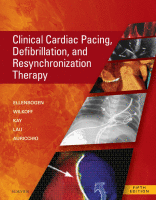Physical Address
304 North Cardinal St.
Dorchester Center, MA 02124

Acknowledgment: This work was supported by the Research Grants Council of Hong Kong, General Research Fund (No. HKU 7801/10M, HKU 7811/11M). Introduction Heart failure (HF) is a substantial cause of mortality, morbidity, and health care expenditure worldwide. The burden of…

In October 1958, the first fully internalized pacemaker was implanted at the Karolinska Institute in Sweden. Within hours, the unit ceased to function, or as Senning wrote in a retrospective account “at 2 am the pacemaker became silent.” When searching…

Introduction Computer modeling of heart function has emerged as a powerful tool in the study of heart rhythm and pump disorders. Biophysically detailed cardiac simulations can explain experimental observations and help reveal how organ-scale arrhythmogenic phenomena (ectopic heartbeats, conduction failure,…

General Introduction Inherited cardiac arrhythmia syndromes may predispose individuals to sudden cardiac death (SCD) as a consequence of an inherited genetic abnormality affecting key proteins of the heart. Traditionally, these genetic disorders are categorized as inherited cardiomyopathies, including hypertrophic cardiomyopathy,…

Implantable cardiac pacing was born in 1958 and has never stopped evolving since. The contribution of new advances has been dramatic in this development, especially over the last 25 years, because of the introduction of electronics and the progress in…

Permanent cardiac pacemakers and implantable cardioverter defibrillators have been used in children for over half a century. There are several important differences in device usage between children and adults. Children are not only physically smaller than adults, but they also…

The number of patients with chronic heart failure is increasing rapidly throughout the industrialized economies of the world. The majority of the expense for the management of patients with heart failure (HF) is mostly related to hospitalizations. In the United…

Implantable cardioverter-defibrillators (ICDs) are the most effective means for treatment of ventricular arrhythmias and prevention of sudden cardiac death. In their early use, ICDs were implanted for secondary prevention in those patients who were survivors of sustained ventricular arrhythmias or…

Over the last few decades cardiovascular mortality and sudden cardiac death (SCD) have gradually declined due to improvements in management of patients at risk with advent of primary coronary interventions, widespread use of statins, angiotensin-converting enzyme (ACE) inhibitors, and β-blockers.…

The Clinical Spectrum of Reflex Syncopes Reflex syncope (synonym: neurally-mediated [reflex] syncope ) refers to a reflex response that, when triggered, gives rise to vaso-/venodilation and/or bradycardia; however, the contribution of each of these two factors to systemic hypotension and…